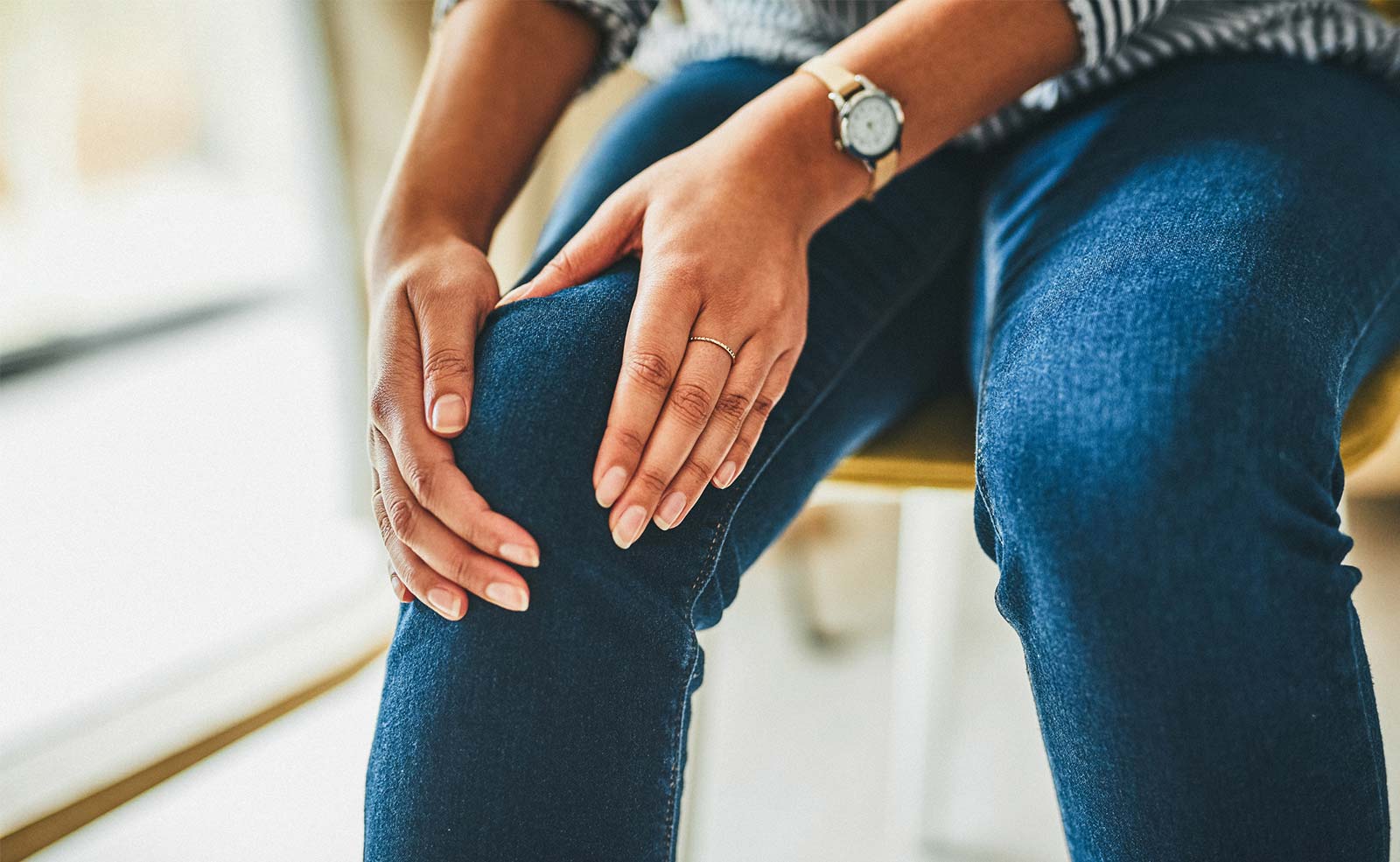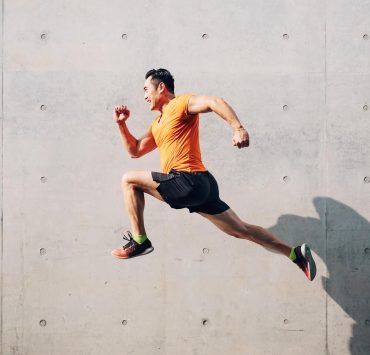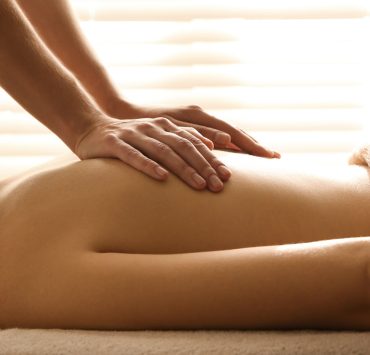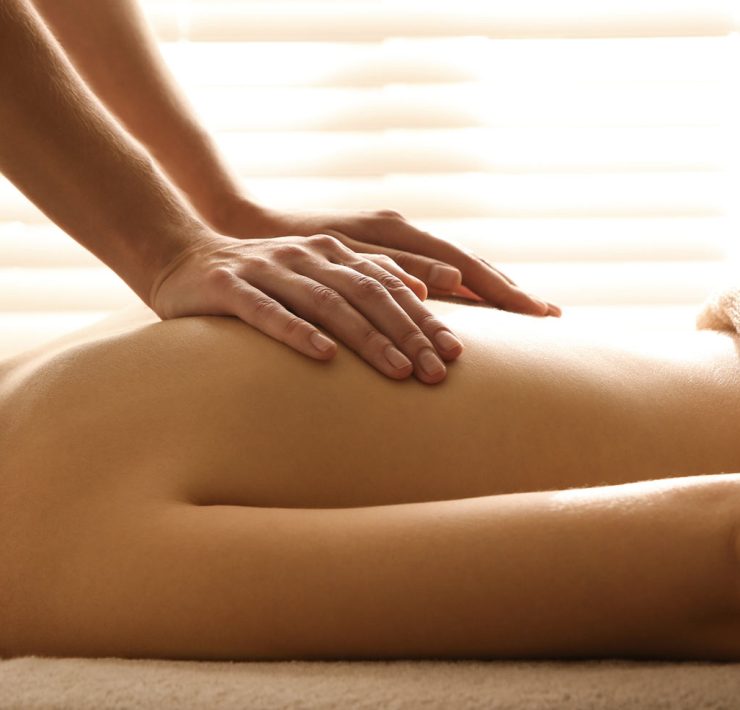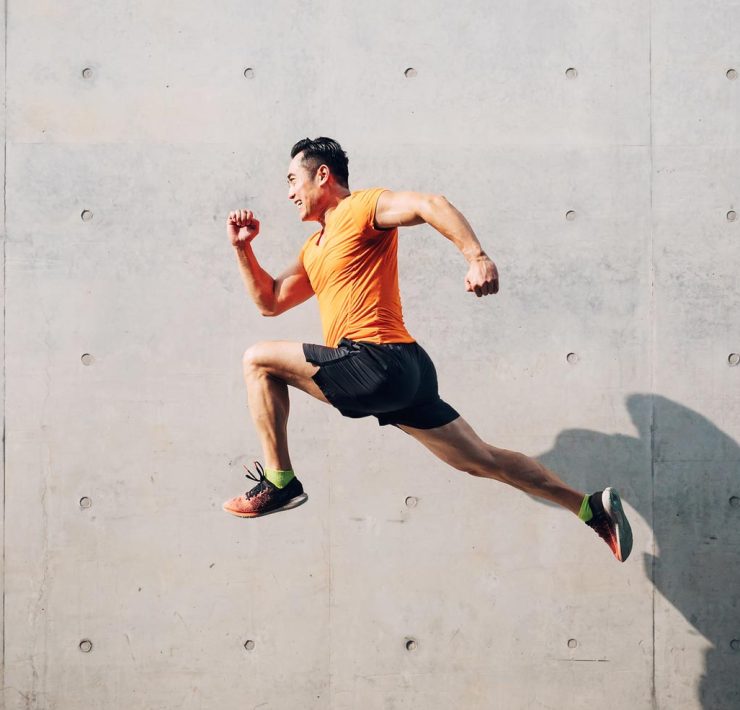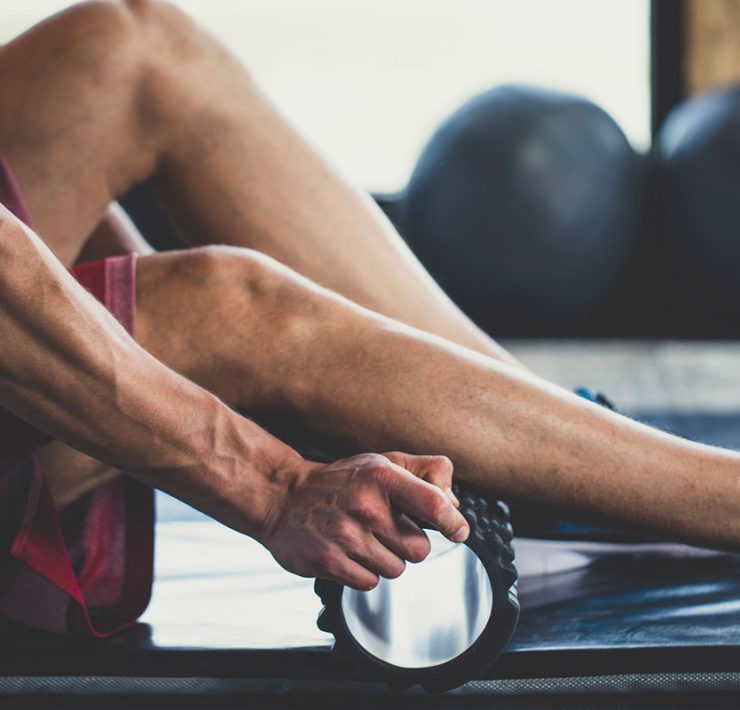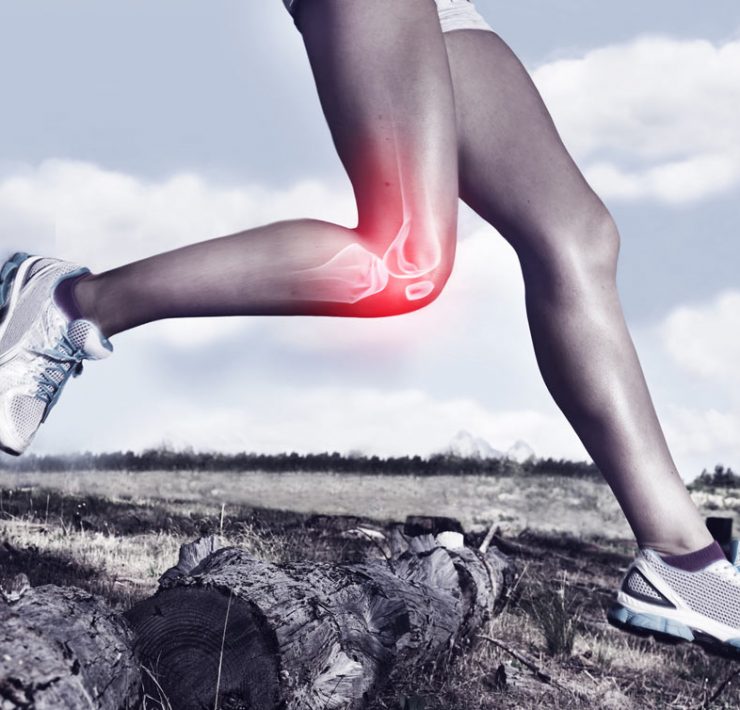Knee pain is one of the most common chronic pains suffered by Americans. It has a variety of causes—some easy to ID and others not so much. No matter the cause, knee pain can have a major impact on your daily life, since the knee is activated nearly every moment you’re on your feet. So let’s dive into what’s going on under the cap, so to speak, and how you can root out the cause and find relief.
Structure and Components of the Knee
The knee is a complex joint involving cartilage, muscles, four ligaments, two menisci, and four bones (femur, tibia, fibula, and patella). So complex, in fact, that it’s technically considered two “joints”: the patellofemoral joint (where the kneecap interfaces with the femur) and the tibiofemoral joint (where the tibia interfaces with the femur).
Numerous muscles surround these joints, including the popliteus, plantaris, gastrocnemius, and hamstrings crossing the back of the knee; quadriceps across the front; IT Band running along the lateral side; and the sartorius and gracilis on the medial side. With so many components involved in a well-functioning knee, it only takes one going awry to cause serious pain—or worse.
What’s Causing Your Knee Pain?
Knee pain can present in several different ways. It can be persistent, occur at the beginning of activity and then taper off, ramp up during activity, or occur when you’re active and cease when you’re not. The pain can feel achy, fiery, or sharp; and it can present under the kneecap, below or above it, or along the sides. These patterns provide important clues about the source of the pain.
Active or Passive?
The first step in decoding knee pain is to establish if the pain occurs in active or passive range of motion. If the pain occurs during passive range of motion—meaning, when the knee joint is moved around by an external force without you actively moving it yourself—you should consult a physician. But if the pain only occurs during active range of motion (“AROM”), the cause is most likely muscular, which can often be improved with self-care, physical therapy, or massage.
Muscular Causes of AROM Knee Pain
Pain during active range of motion that presents below the kneecap around your shin is frequently caused by an issue with the quadricep, as could pain underneath the kneecap.
Pain on the outer side of your knee could be traced back to the IT band, while pain behind the knee could be connected to any of the several muscles that cross the back of the knee (see Structure and Components of the Knee above).
Self-Care Techniques for Treating Knee Pain from Active Range of Motion
There are several ways you can address active range of motion knee pain on your own:
- Rest: One of the easiest solutions of all!
- Ice: Especially after exercise or long periods on your feet. Ice reduces swelling and pain, while bringing blood back into the area to promote healing.
- Stretching: If you know which muscle(s) are the culprit, targeted stretching in those areas will help relax them and restore them to a healthy state.
- Foam rolling: Often used in combination with one or more of the above techniques, the massaging effects of foam rolling will also help relax sore or spasming muscles.
- Self-massage technique: Sit on the floor with your legs straight out in front of you. Using your palms or forearms, apply static pressure in a straight line up and down the quadricep, from your hips to your knee. Start in the center (the front-most facing part of your thigh), then repeat on either side of that midline to ensure the full quadricep is massaged. You can also use your fingertips to apply gentle cross fiber friction to your patellar tendon (the springy area below your knee cap where children often scrape their knees), as well as the quadriceps tendon, just above your knee cap.
How Can Massage Help Knee Pain?
Massage therapy is an excellent, low-risk (and relaxing!) way to tackle all sorts of chronic pain, including knee pain. Massage can help reduce inflammation and loosen tight muscles that may be contributing to your achy knees. Here’s how a massage therapist would likely proceed:
To address knee pain with massage, the therapist will likely focus directly on your affected knee, doing gentle cross fiber friction on your patellar and quadriceps tendons (then tendons directly below and above your kneecap, respectively). They will also likely massage the quadriceps, which can entail pressure along the direction of your quad’s grain with palms, fists, or forearms, (like the self massage described above), as well as cross fiber techniques perpendicular to the muscle grain.
On the other side of the leg, the therapist may massage the hamstring, using some of the same techniques described above. They will also work on your calves and shins, targeting such muscles as the gastrocnemius, which crosses the back of the knee. To the extent that you are comfortable, the therapist may address your gluteal muscles, since they can affect function throughout the leg. Your non-affected leg will also be massaged, to address any imbalances or misalignments contributing to your knee pain.
Massage can be employed in conjunction with any of the self-care techniques described above, or with physical therapy. Plus, your massage therapist may have more ideas after working on your body, so be sure to communicate candidly with them!
Other Ways to Address and Alleviate Knee Pain
If your knee pain is still not resolving after trying the techniques above, there are more solutions you can try…
- Replace your shoes if they’re getting worn out—especially in the midsole, which is where the shock-absorbing cushioning is.
- Favor softer surfaces for recreational activities—like grass, dirt, or wood—over less forgiving surfaces like concrete, asphalt, or tile.
- If you’re a road runner, try running on both sides of the road (safety conditions allowing). The asymmetrical crown and slope of the road could be contributing to your knee pain.
- Side sleeper? Sleep with a bolster between your knees to promote proper alignment throughout your legs.
- Stretch and foam roll your gluteal muscles. Even though they’re not directly involved in knee function, they still play a part.
- A knee brace can help force patellar tracking into a more comfortable position while applying compression, limiting excessive range of motion, and providing proprioceptive feedback.
- Physical therapy can assess for disorders, misalignments, and imbalances in your knees. Further, a knowledgeable physical therapist can prescribe exercises and stretches to help you build strength where you need it, correct harmful patterns, and prevent pain moving forward..
Knee pain can affect nearly every aspect of your daily life—work, recreation, sleep, family life, and more. The self-care options described above, as well as massage and physical therapy. Can provide a pathway to relief. But, of course, always consult your doctor to properly diagnose and treat any condition from which you’re suffering. We’ll be here to support you (and your knees) along the way.
Melanie Peddle holds a MS in Mechanical Engineering and has been practicing massage since 2012. She is an instructor with Western Colorado University in its partnership with the University of Colorado, focusing on biomechanical engineering and injury, as well as applications in adaptive sports. An accomplished collegiate athlete, Melanie brings an engineer's mind to all her physiological pursuits, and a passion for the most interesting engineering challenge of all: the human body.

